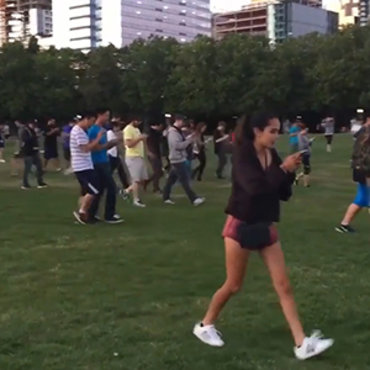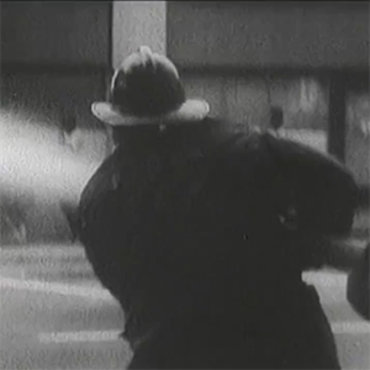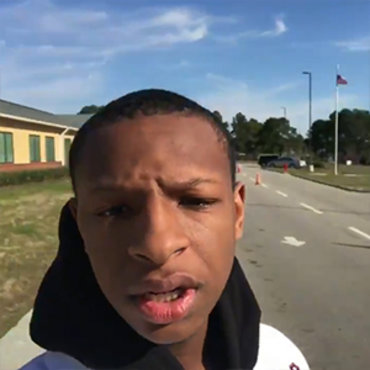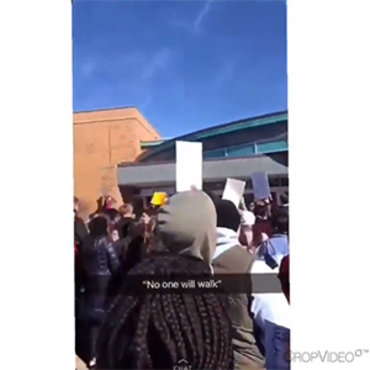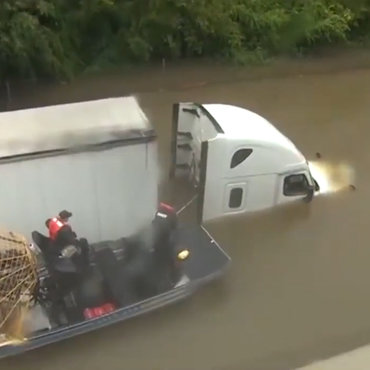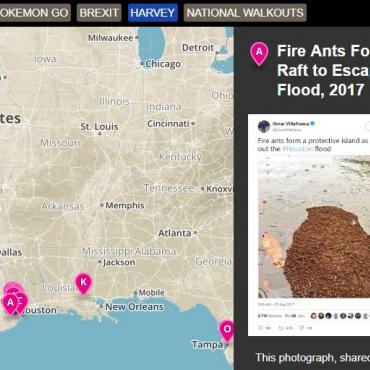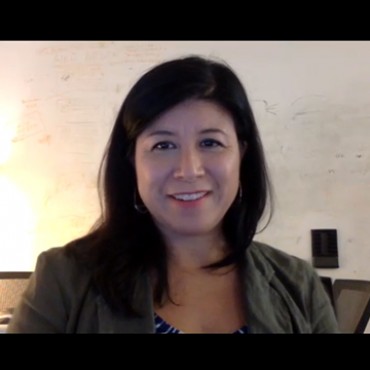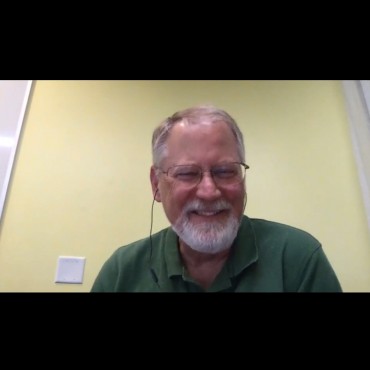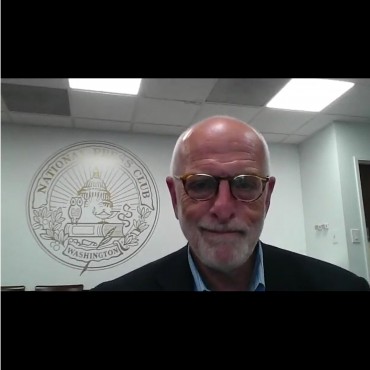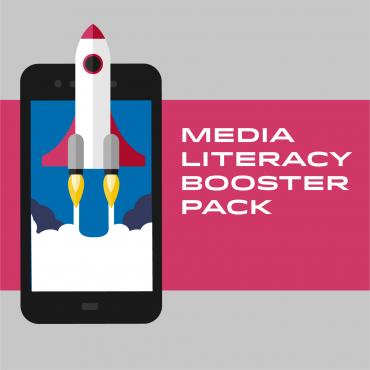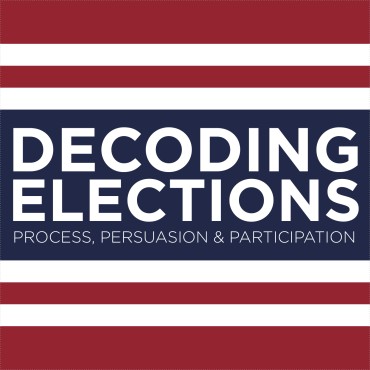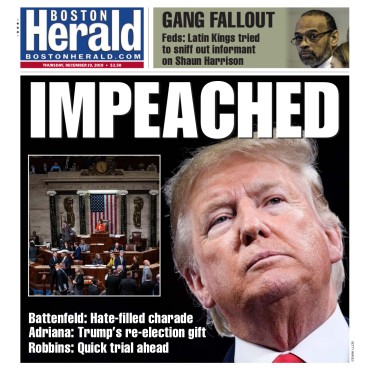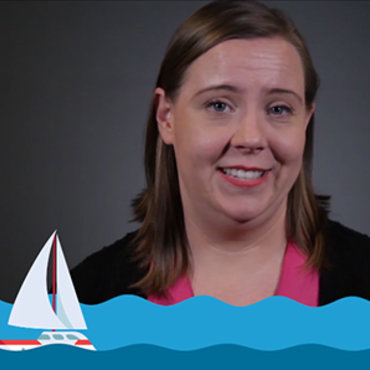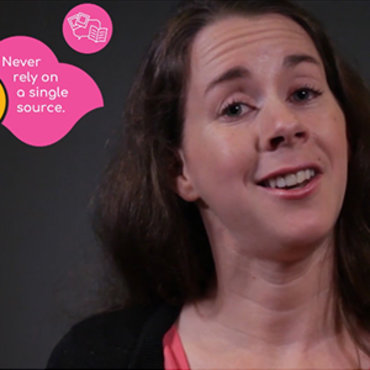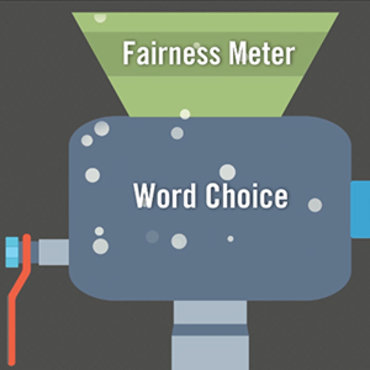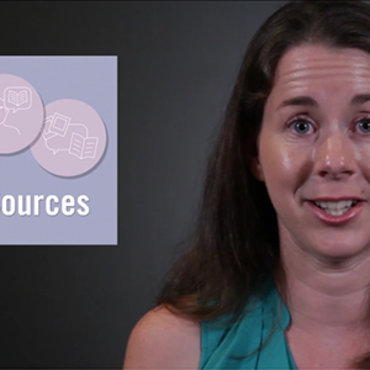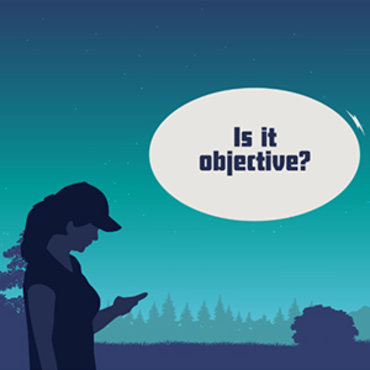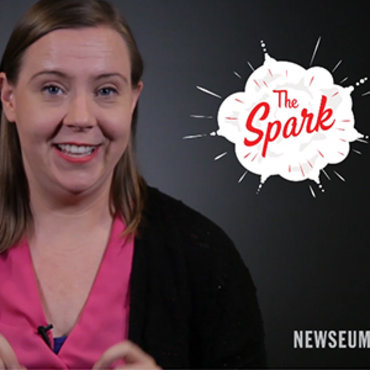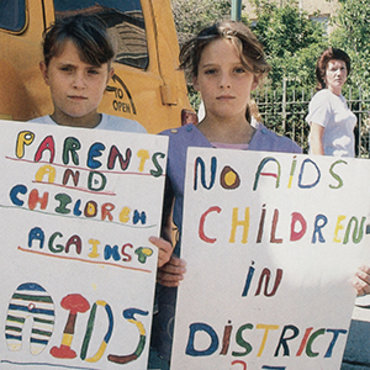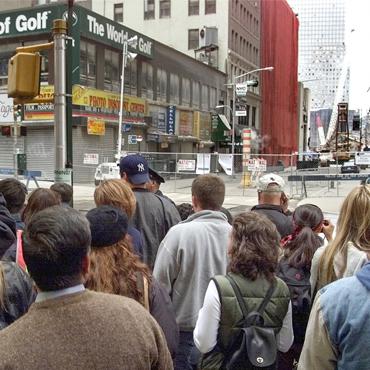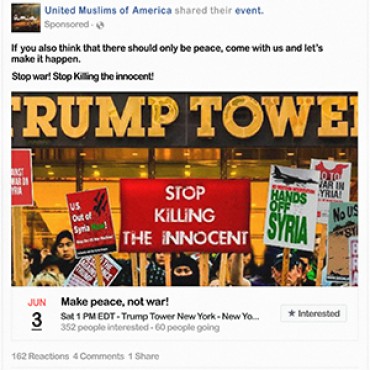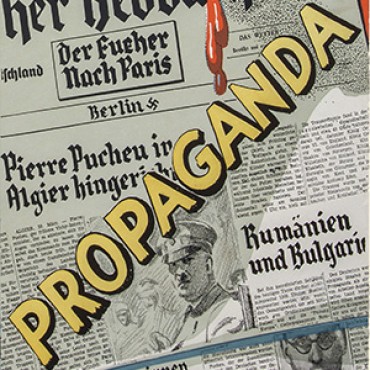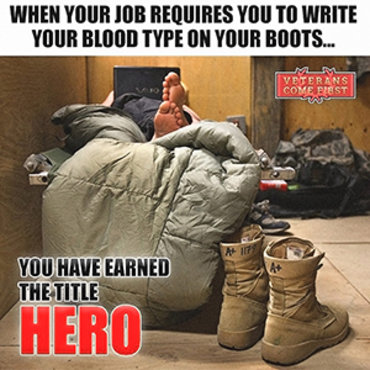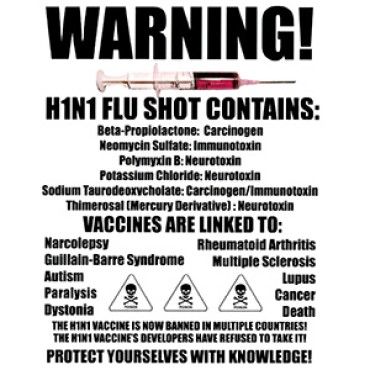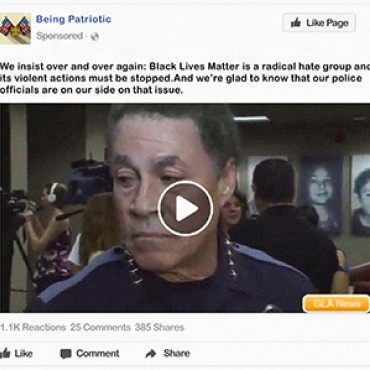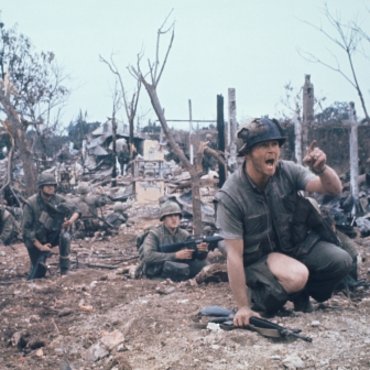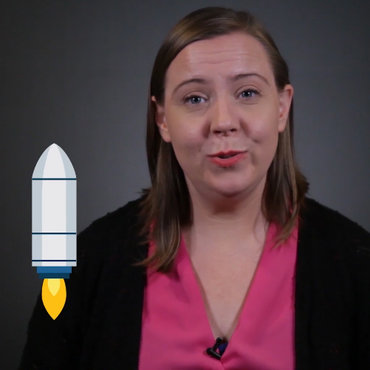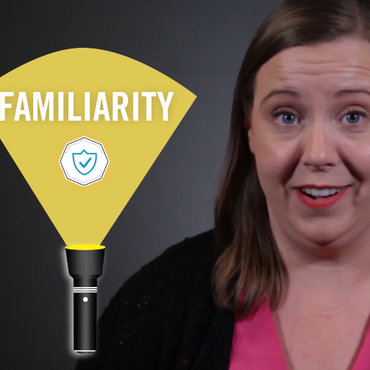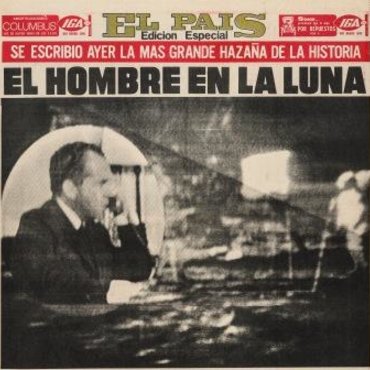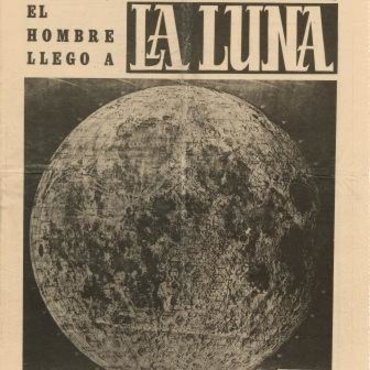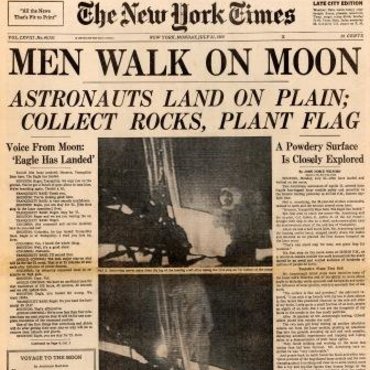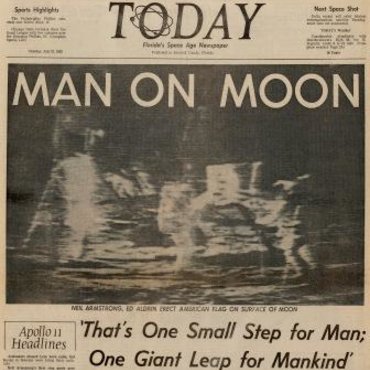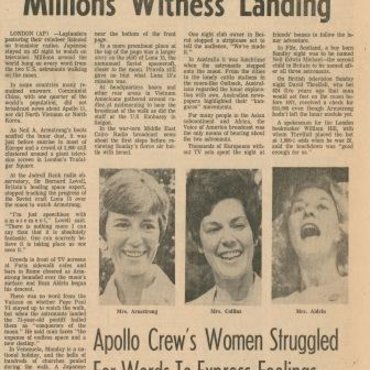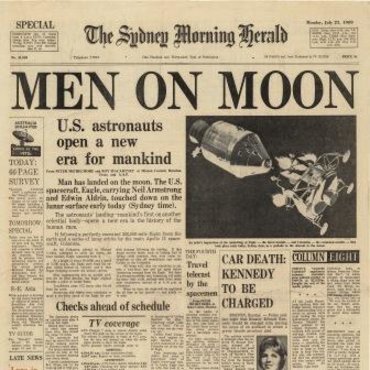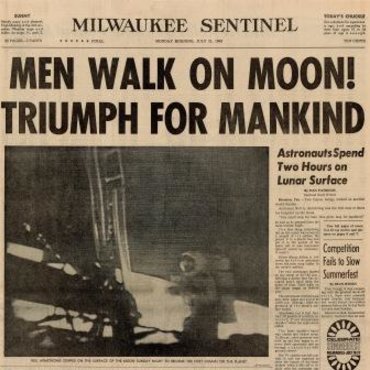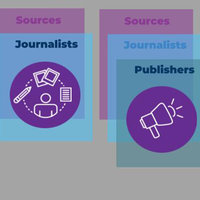
Getting to the Source
A layered graphic helps students understand how a news story goes from raw information – the source – to their newsfeed or text chain; then students zero in on sources in real-life news stories.
Get even more great free content!
This content contains copyrighted material that requires a free NewseumED account.
Registration is fast, easy, and comes with 100% free access to our vast collection of videos, artifacts, interactive content, and more.
NewseumED is provided as a free educational resource and contains copyrighted material. Registration is required for full access. Signing up is simple and free.
With a free NewseumED account, you can:
- Watch timely and informative videos
- Access expertly crafted lesson plans
- Download an array of classroom resources
- and much more!
- Current Events
- Journalism
- 7-12
Are your students savvy searchers? Can they spot the difference between a straight news article and an opinion piece? Do they recognize bias in their sources … or in themselves?
You are in one of Fact Finder: Your Foolproof Guide to Media Literacy’s 11 flexible, multimedia lesson plans to tackle these challenges. Eight skill-building lesson plans introduce essential media literacy concepts through engaging explainer videos and colorful infographics that help students revisit, retain and apply the key concepts. The accompanying News or Noise? Media Map provides a collection of examples ready for students to analyze and evaluate with the support of worksheets and discussion prompts. Three reporting lesson plans help students take what they’ve learned and apply it to their own content creation, inspired by the issues that matter to them.
Adapting Fact Finder for Your Classroom
FROM KEY IDEAS TO COMPLETE CURRICULUM
Polish one particular skill or take your students on a comprehensive journey from news novices to media masters. We designed this suite of 11 lesson plans and their corresponding resources to be used either as a complete curriculum or individually. There’s also flexibility within each lesson plan to complete the whole thing or choose individual resources and smaller activities.
Building New Skills and Ideas
Each lesson plan’s format is inspired by the 5-E’s constructivist instructional model (engage, explore, explain, elaborate, evaluate). For students new to media literacy or news consumption, the opening “engage” activity along with the explainer video and infographic may be enough to build their awareness of key concepts. More advanced students can put these concepts into action as they navigate the News or Noise? map with the help of worksheets to guide their application. Those who have already developed their media savvy can still be challenged to elaborate by applying the infographic tips and methods to the boundless content available online.
A Cross-Disciplinary, Standards-Driven Toolbox
No matter what subject you teach, bringing elements of media literacy and journalism into your curriculum can benefit your students and help you meet standards, including Common Core requirements for analyzing sources, creating content and using non-print texts. Media literacy empowers students to conduct better research and make better arguments, whether the topic is the Civil War or the biological impact of GMOs.
The challenges today’s media landscape poses for our students — and for all of us — can be daunting. But we hope this collection of content provides an approachable way to help your students hone their ability to find quality content and begin creating their own to share with the world.
— The NewseumED Team
- Tell students that they’re going to learn about how news is produced and how to determine if it is reliable. Ask students to think of a recent issue or event in the news. Then brainstorm a list of who was or could have been involved in creating and sharing news about that issue or event in today’s media landscape. Answers should cover a broad range of players, such as paparazzi, reporters, news apps, friends on social media, print or online publications, students themselves, etc.
- Distribute the Who Touches the News worksheet and have students go through the quick exercise of putting the four imagined individuals in order of their role in creating or spreading the news story. Once they’ve finished, ask them which of these people they think is the source for this news story. Answers may vary — students may argue that any of these individuals could be considered the source of this story depending on where/how the reader got it. In everyday conversations, students often describe Google or a friend who shared a story as their “source.”
- Explain that sometimes there is confusion over what we mean when we say the source of a news story. While the word source can be used loosely in many ways, when it comes to news, the source is the person or thing that provides key information.
- Watch the “Getting to the Source” explainer video and review the accompanying tipsheet graphic. Look back at the Who Touches the News worksheet and have students assign a role/layer to each of the names from this exercise. Based on the small amount of information here, do they think this scientist would be a reliable source? Apply the key questions from the graphic to guide the discussion. Also discuss their answers to where they might find this type of news story and point out that some methods of sharing are driven automatically by technology (news apps/alerts/feeds), while others depend on an individual using a tool to share something (a posting on Twitter or message via WhatsApp). Though these examples may be where the news “came from” before it reached you, they aren’t the original source.
- Tell students it’s time to apply their source-digging skills to real-life examples. Distribute the worksheet and printed media examples from the News or Noise? media map, or provide students with access to the map online. Walk through one example as a class to ensure comprehension. Then have students work individually or in small groups to complete the worksheet.
- Suggested example for group review:
- National Walkout Day: Black Teens Ambivalent About Walkouts, 2018 (1 and 2 of 2)
- Suggested example for student analysis:
- Pokémon Go: Marketers Take Advantage of Pokémon Go Fad, 2016
- Suggested example for group review:
- Have students discuss their answers and process, then use the questions below to continue the conversation.
- Who Touches a News Story? and Getting to the Source worksheets (in lesson plan download), one per student or small group
- Internet access to “Getting to the Source” video (above)
- Getting to the Source tipsheet (download), one per student or group
- Access to the News or Noise? media map (below) or printed sets of the selected examples
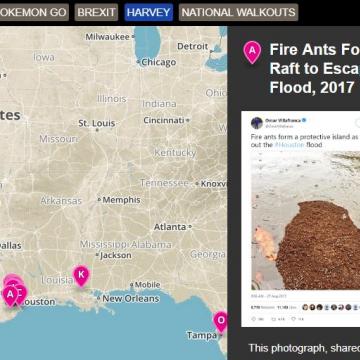
News or Noise? Media Map
News or Noise? Media Map
- Why is recognizing the source(s) essential to evaluating a news story?
- How many sources did you find in your news story? Were there enough? Too few? Too many? Explain.
- What additional sources do you think the reporter could have used?
- When and how should reporters use anonymous sources?
- Which of the key questions about a source’s reliability is the easiest to answer? The most difficult?
- When would you be most likely to do a little extra digging to find out more about a reporter’s source? Why?
Watch the “Ask an Expert: Anonymous Sources” video featuring professor Mike Freedman from George Washington University and share the AP’s guidelines on when it is acceptable to use an anonymous sources. Discuss the guidelines and video. Then, have students find articles that use anonymous sources and check them against the AP guidelines. Can they tell if this instance satisfied the guidelines or not? How does the use of the anonymous source affect how they view the story in general? Discuss and/or write short essays taking a position on why anonymous sources are or are not an acceptable method of reporting a news story.
-
Common Core State Standards: CCSS.ELA-LITERACY.CCRA.R.1
Read closely to determine what the text says explicitly and to make logical inferences from it; cite specific textual evidence when writing or speaking to support conclusions drawn from the text. -
Common Core State Standards: CCSS.ELA-LITERACY.CCRA.SL.1
Prepare for and participate effectively in a range of conversations and collaborations with diverse partners, building on others' ideas and expressing their own clearly and persuasively. -
Common Core State Standards: CCSS.ELA-LITERACY.CCRA.SL.2
Integrate and evaluate information presented in diverse media and formats, including visually, quantitatively, and orally.
-
NCSS C3 Framework: D2.Rel.1.9-12
Explain and analyze the distinction between a devotional assertion of religious beliefs and behaviors and the academic study of diverse devotional assertions from a nonsectarian perspective in specific social and historical contexts.
-
ISTE: 2. Digital Citizen
Students engage in positive, safe, legal and ethical behavior when using technology. -
ISTE: 3a. Knowledge Constructor
Students plan and employ effective research strategies to locate information and other resources. -
ISTE: 3b. Knowledge Constructor
Students evaluate the accuracy, perspective, credibility and relevance of information, media, data or other resources. -
ISTE: 3c. Knowledge Constructor
Students create collections of artifacts that demonstrate meaningful connections or conclusions. -
ISTE: 3d. Knowledge Constructor
Students build knowledge by actively exploring real-world issues and problems.
-
National Council of Teachers of English: NCTE.6
Students apply knowledge of language structure, language conventions (e.g., spelling and punctuation), media techniques, figurative language, and genre to create, critique, and discuss print and non-print texts.
